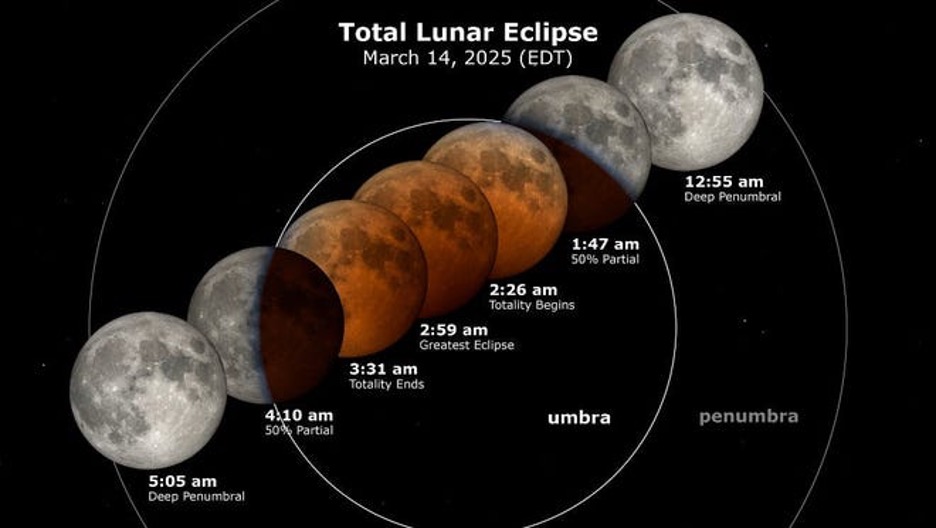TAMIU Planetarium Organizes Telescope Viewing of the Total “Blood Moon” Lunar Eclipse Friday, March 14

Calling stargazers of all ages! Join Texas A&M International University (TAMIU) Lamar Bruni Vergara Planetarium for a Total Lunar Eclipse Watch Party open to the public Friday, March 14, from 12:09 a.m. to 3:47 a.m.
The viewing, free and open to the public, will be held on the parking lot on the right side of TAMIU’s Zaffirini Student Success Center, weather permitting. Children attending will receive a free “Eclipse Expert” certificate to personalize and a free “Total Lunar Eclipse” headband (crown) as mementos of this awesome event.
“The exciting total “blood moon” lunar eclipse that will be visible in Laredo after midnight on Friday, March 14th is an uncommon event.” said Peter Davis, TAMIU Planetarium director, “It will be four years until the next total lunar eclipse will be visible in South Texas on June 26, 2029."
Participants are invited to see a close-up view of the magnificent red-orange full Moon through the Planetarium’s Celestron 9.25-inch telescope and through the Planetarium’s binoculars during this eclipse.
"Bring jackets and lawn chairs to keep you warm and comfortable as you and your family members relax and enjoy watching the stages of this eclipse,” Davis said.
He continued, "We can only experience a total lunar eclipse when the Earth is perfectly positioned directly between the Sun and a full moon, casting a shadow on the Moon’s surface. It is called a 'Blood Moon' because as the Moon passes through the Earth’s shadow, it undergoes a color-shifting process giving it a striking red-orange appearance,"
“Even though the Earth blocks sunlight from directly reaching the Moon during a total lunar eclipse, our planet's atmosphere still bends sunlight to indirectly light up the lunar surface. It’s as if all the world’s red-orange-colored sunrises and sunsets are projected onto the Moon."
The times for this lunar eclipse’s phases in Laredo are:
12:09 a.m. - Partial eclipse begins
1:26 a.m. - Full eclipse begins
1:58 a.m. - Maximum total eclipse
2:31 a.m. - Full eclipse ends
3:47 a.m. - Partial eclipse ends

Photo credit: NASA website/NASA's Scientific Visualization Studio.
The total lunar eclipse, the first since November 2022, will be visible across the United States the night of March 13 into early March 14. The eclipse does not require special equipment to witness safely, but binoculars or telescopes will enhance the viewing experience. Nearby handicapped parking spaces and curb-cuts will make this event barrier-free and accessible.
For more information about the March 14th eclipse, visit the Planetarium’s webpage at https://www.tamiu.edu/planetarium/index.shtml or on NASA’s website (in English and Spanish) at https://svs.gsfc.nasa.gov/5473.
A printable TAMIU campus map is available at the following link: https://www.tamiu.edu/map.shtml.
For more information about this event, please call the TAMIU Planetarium Director, Peter Davis, at (956)326-3128, or email him at peter.davis@tamiu.edu.